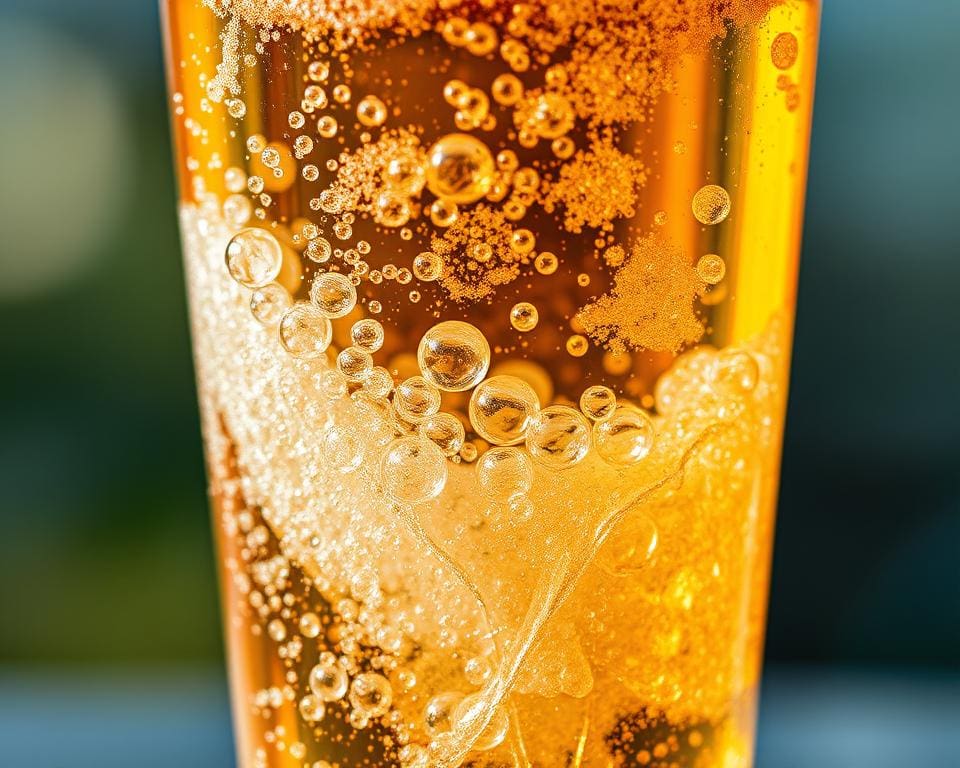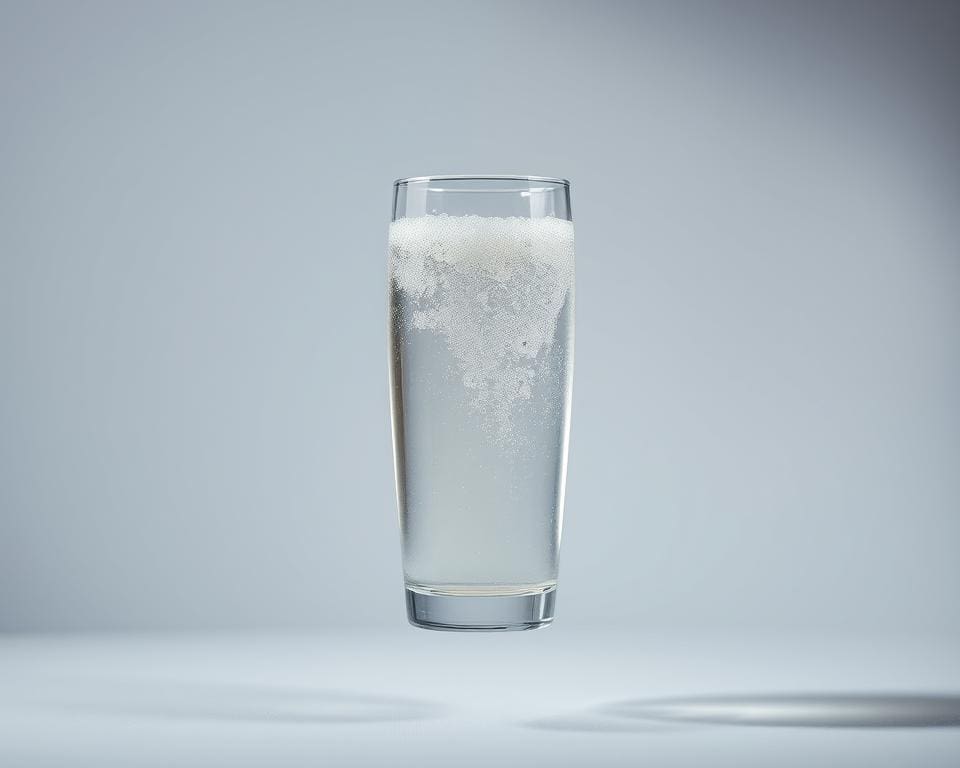Fizzy drinks have a unique charm that sets them apart from still beverages, largely due to the gas that creates their delightful effervescence. The primary gas responsible for this bubbly sensation is carbon dioxide (CO2). When the gas is dissolved under pressure within a liquid, it awaits the moment of release that occurs when a bottle or can is opened. This instant causes the dissolved CO2 to escape, resulting in the mesmerizing bubbles that many find refreshing. Understanding what is the gas in fizzy drinks provides an essential insight into the carbonation process, paving the way for a broader exploration of carbonated beverages and their significant role in our lives.
Understanding Carbon Dioxide
Carbon dioxide, often abbreviated as CO2, plays a vital role in creating the fizzy sensation we associate with carbonation. This colourless gas is not only responsible for producing effervescence in beverages but also works to enhance the flavours that we enjoy. Understanding these functions reveals just how significant carbon dioxide is in the world of fizzy drinks.
The Role of Carbon Dioxide in Effervescence
When carbon dioxide is dissolved in liquid, it forms tiny bubbles that rise to the surface, creating the delightful effervescence characteristic of sparkling beverages. This process occurs due to the pressure differences when the cap or seal is broken, allowing the gas to escape and create that exhilarating fizz. The sensation of these bubbles on the tongue adds a playful element to the drinking experience, setting carbonated drinks apart from still ones.
How Carbon Dioxide Enhances the Flavour
The presence of carbon dioxide significantly enhances the perception of flavour within fizzy drinks. By stimulating taste receptors, it can amplify sweetness and contribute to a more vibrant sensory experience. The mild acidity of carbon dioxide adds a refreshing bite that complements various flavour profiles, making each sip not just enjoyable but also invigorating. This synergy of effervescence and flavour enhancement is what makes carbonated drinks so appealing.

The Carbonation Process
The journey to fizzy drinks begins with the carbonation process, a fascinating interplay between science and flavour. Understanding how carbon dioxide infuses into beverages reveals the magic behind these effervescent delights. Different methods exist, each boasting distinct benefits and characteristics, appealing to both producers and consumers of carbonated beverages.
How Carbonation is Achieved in Beverages
To create carbonated beverages, two primary methods dominate. The first involves forced carbonation, where carbon dioxide is injected directly into the liquid under pressure. This technique allows for precise control over the level of fizziness, making it a favourite among manufacturers. The second method, natural carbonation, arises during fermentation, as yeast converts sugars into alcohol and carbon dioxide. Each approach has its charm, with forced carbonation offering consistency while natural methods boast unique flavours derived from the fermentation process.
Different Techniques for Carbonating Drinks
Beyond the basic methods, a variety of carbonation techniques enhance the quality and experience of fizzy drinks. One popular tool is the carbonation stone, which diffuses CO2 into the beverage, creating a fine bubble distribution. This technique not only improves efficiency but also influences taste, ensuring every sip is refreshing. Other techniques, such as using keg systems or home carbonation machines, lend versatility to enthusiasts and businesses alike. The choice of technique often reflects the desired characteristics and consumer preferences, making the carbonation process a vital element in the world of beverages.
What Is The Gas In Fizzy Drinks
The charm of fizzy drinks lies in their effervescence, primarily due to the gas that creates the beloved bubbles. Understanding what causes the bubbles in your favourite drinks deepens appreciation for these effervescent delights. In most fizzy beverages, carbon dioxide plays a pivotal role in not only creating the fizz but also in enriching the overall sensory experience.
What Causes the Bubbles in Your Favourite Drinks
As carbon dioxide is dissolved under pressure during the carbonation process, the liquid holds onto this gas. When you open a bottle, the pressure is released, allowing carbon dioxide to escape. This rapid escape forms the iconic bubbles, resulting in the delightful fizz that dances upon your palate. This interaction captivates the senses, providing not just taste but also a gratifying auditory experience, further enhancing your enjoyment of the drink.
Carbon Dioxide vs Other Gases in Beverages
While carbon dioxide is the most common gas used in carbonated beverages, it is not the only one. Other gases, such as nitrogen, are utilized in certain drinks, notably stouts and some craft beers. These alternatives produce a creamier mouthfeel compared to the sharpness associated with carbon dioxide. Each gas imparts distinct qualities to beverages, influencing not only texture but also the flavour profile, making carbon dioxide the go-to choice for that classic fizz.
The Fizzy Drinks Industry
The fizzy drinks industry is undergoing a remarkable transformation shaped by various global trends. An increasing number of consumers are leaning towards health-conscious options, which has significantly influenced the preferences for carbonated beverages. This shift reflects a broader awareness of nutrition and wellness, impacting product development and marketing strategies.
Global Trends in Carbonated Beverages
Across the globe, the focus has turned to healthier alternatives within the soft drinks market. Many consumers now prioritise lower sugar levels, leading brands to innovate and adapt their offerings. Popular trends include:
- The rise in demand for sparkling water, favoured for its refreshing qualities without the added sugars.
- An increase in flavoured carbonated options that provide the taste experience without compromising health.
- The growing popularity of natural sweeteners in fizzy drinks, catering to health-conscious consumers.
The Impact of Carbonation on Soft Drinks Sales
The impact of carbonation extends beyond mere effervescence; it plays a crucial role in driving soft drinks sales. Fizzy drinks continue to captivate consumers through their unique mouthfeel and refreshing taste. As health trends gain momentum, brands adjust their strategies to meet changing tastes. This dynamic landscape offers both challenges and opportunities, encouraging innovation that aligns with consumer expectations while maintaining the classic appeal of carbonated beverages.
Soda and Its Popularity
The rise of soda in everyday life illustrates its remarkable journey from a simple novelty to a beloved staple beverage. As advancements in production techniques emerged, so did the possibilities for creating diverse flavours that captivated consumers. Iconic brands like Coca-Cola and Pepsi have effectively used marketing strategies to entrench carbonated soft drinks into the fabric of society, highlighting moments that resonate emotionally with their audience.
How Soda Became a Staple Beverage
Since its inception, the soda popularity has soared, transforming fizzy drinks into a standard choice for consumers across the globe. The introduction of mass production methods in the late 19th and early 20th centuries made these beverages accessible. Distinct flavours created unique identities, leading to an extensive assortment that appealed to varied palates. As a result, soda became a favourite companion at events, family gatherings, and casual meet-ups, solidifying its status as a staple beverage.
The Cultural Significance of Carbonated Soft Drinks
Beyond mere refreshment, carbonated soft drinks hold deep cultural significance, often symbolising joy and nostalgia. Their presence at celebrations, from birthday parties to festive gatherings, cements the connection between soda and shared experiences. This fizzy beverage transcends the ordinary, becoming part of cherished memories. From the clinking of glasses during toast to the casual sip during a sunny picnic, the emotional ties create a strong sense of identity for many consumers, affirming the enduring legacy of soda in modern culture.
Sparkling Water: A Refreshing Alternative
The popularity of sparkling water has surged, positioning it as a refreshing alternative to traditional sugary drinks. Many individuals now turn to this fizzy beverage not only for its delightful taste but also for the myriad health benefits it offers.
Health Benefits of Sparkling Water
Sparkling water provides several health benefits that contribute to its increasing appeal. Firstly, it promotes hydration, which is essential for overall well-being. Staying adequately hydrated helps maintain energy levels and supports various bodily functions. Furthermore, some studies suggest that the carbonation in sparkling water may aid digestion, offering a gentle relief from discomfort for many.
Carbonation in Achieving Refreshment Without Sugar
The unique carbonation of sparkling water delivers a crisp, refreshing experience that mimics that of sugary soft drinks without the unwanted calories and sugar content. For health-conscious consumers, this makes sparkling water a preferred choice, allowing them to enjoy fizz and flavour without the guilt. This shift towards a healthier lifestyle aligns well with the growing trend among individuals looking for enjoyable yet wholesome beverage options.
The Science Behind Effervescence
The charm of fizzy drinks lies not only in their refreshing taste but also in the fascinating science of effervescence. This phenomenon combines the principles of chemistry and physics to create the delightful bubbles that dance in our beverages. Understanding this process can enhance our appreciation for the drinks we enjoy.
What Makes Drinks Fizzy?
The carbonation effects in fizzy drinks primarily stem from carbon dioxide (CO2) being dissolved under pressure. When a bottle or can is sealed, high pressure enables a large amount of CO2 to dissolve in the liquid. Opening the container releases this pressure, allowing the gas to escape in the form of bubbles.
Several factors influence the solubility of CO2 in liquids, including temperature and pressure. Generally, colder liquids can hold more gas, which is why a chilled soda maintains its fizz longer than a warm one. This relationship highlights the importance of temperature in the overall enjoyment of carbonated beverages.
The formation of bubbles is a physical manifestation of the science of effervescence. When the pressure is released, tiny nucleation sites—imperfections in the bottle or glass—act as catalysts for bubble creation. As the gas escapes from the liquid, it rises and escapes into the air, providing that signature fizzy sensation.
The Future of Carbonated Beverages
The future of carbonated beverages looks promising as the industry embraces various innovations that cater to evolving consumer preferences. As health-conscious choices become increasingly important, brands are exploring new formulations that enrich fizzy drinks with vitamins, probiotics, and other functional ingredients. This aligns with a growing trend towards beverages that not only refresh but also contribute to overall wellness, inviting consumers to experience a new dimension of taste and health benefits.
Additionally, advancements in production methods are setting the stage for exciting flavour developments. With the advent of new flavour infusion techniques and the introduction of exotic tastes from around the globe, consumers can look forward to an explosion of exciting options in their favourite fizzy drinks. The future of carbonated beverages indicates a significant shift in how beverages are created and marketed, ensuring that quality and creativity go hand in hand.
As sustainability becomes a priority, brands are also innovating in packaging solutions and sourcing practices, reducing their environmental footprint while catering to the increasing eco-awareness among consumers. This dynamic evolution highlights the industry’s commitment to not just creating enjoyable experiences but also fostering a responsible approach to consumption. With such vibrant trends on the horizon, it is an exhilarating time for fans of fizzy beverages to explore the enticing possibilities that await them.









